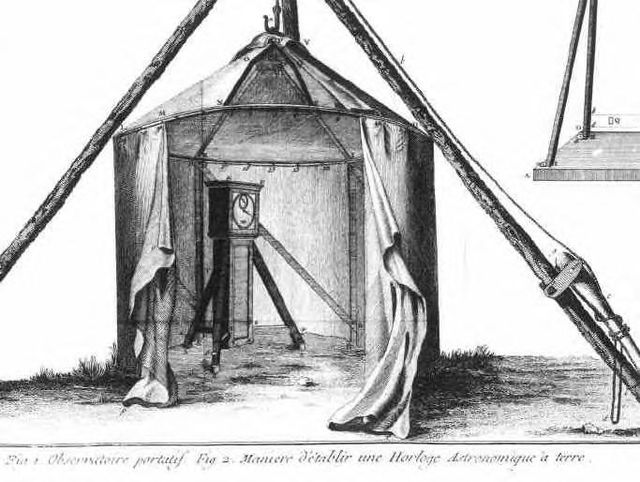1769 transit of Venus observed from Tahiti
On 3 June 1769, navigator Captain James Cook, naturalist Joseph Banks, astronomer Charles Green and naturalist Daniel Solander recorded the transit of Venus from the island of Tahiti during Cook's first voyage around the world. During a transit, Venus appears as a small black disc travelling across the Sun. Transits of Venus occur in a pattern that repeats itself every 243 years, with two transits that are eight years apart, separated by breaks of 121.5 and 105.5 years. These men, along with a crew of scientists, were commissioned by the Royal Society of London for the primary purpose of viewing the transit of Venus. Not only would their findings help expand scientific knowledge, it would help with navigation by accurately calculating the observer's longitude. At this time, longitude was difficult to determine and not always precise. A "secret" mission that followed the transit included the exploration of the South Pacific to find the legendary Terra Australis Incognita or "unknown land of the South."

Fort Venus located on the north coast of Tahiti
Point Venus Lighthouse, Tahiti (LMS, 1869, p.)
Portable Observatory used by Captain Cook, containing “une Horloge Astronomique”, an astronomical clock.
Sketchings of the 1769 Venus Transit by Captain James Cook and Charles Green, showing the "black drop effect". Note the differences in the drawings.
Captain James Cook was a British explorer, cartographer and naval officer famous for his three voyages between 1768 and 1779 in the Pacific Ocean and to New Zealand and Australia in particular. He made detailed maps of Newfoundland prior to making three voyages to the Pacific, during which he achieved the first recorded European contact with the eastern coastline of Australia and the Hawaiian Islands and the first recorded circumnavigation of New Zealand.
Portrait by Nathaniel Dance-Holland, c. 1775
Elizabeth Cook, wife and for 56 years widow of James Cook, by William Henderson, 1830
Cook landing at Botany Bay (Kamay)
Endeavour replica in Cooktown, Queensland harbour – anchored where the original Endeavour was beached for seven weeks in 1770








